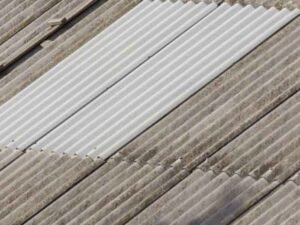Your home might not speak, but it often gives clear signs when something is wrong. Most people ignore these signals because they seem small at first. But minor issues can grow into bigger problems if not handled on time.
These issues often start with signs like poor temperature control, flickering lights, or small cracks in the walls. Many homeowners don’t connect these clues to real problems because they seem harmless.
If you’ve noticed things like weird noises or stubborn doors, your home might be asking for help. This article breaks down some of the most common signs and what they could mean, so you know when it’s time to take action.
Doors That Won’t Stay Shut
Sometimes, doors that once worked fine begin to stick or won’t close all the way. While you might blame it on humidity, that’s not always the case. It could be a sign that your home’s foundation has shifted slightly.
Changes in the ground below your home, or even poor drainage around the base, can cause minor shifts that affect door frames. Moisture damage from leaks or flooding can also swell the wood around a door.
Check for gaps around the door frame or cracks nearby. These details can tell you if the problem is just wear and tear or something that needs more attention.
Dust That Comes Back Too Fast
If you dust a room and it looks dirty again a day or two later, it may not be a cleaning issue. Homes with dirty air ducts or leaks in the ductwork often push dust into rooms every time the system runs. This affects air quality and can make allergy symptoms worse, especially in children or older adults.
It may also be a sign that your residential HVAC system isn’t filtering the air properly. Replacing filters regularly helps, but if dust builds up fast even after that, you might need a full duct cleaning or airflow inspection.
Noises in the Walls or Ceiling
Hearing unusual sounds in your home can be unsettling. If you hear tapping, banging, or scratching, it’s worth finding the source. These sounds might come from expanding pipes, loose framing, or even pests. Mice and squirrels can find their way into walls and attics, especially during colder months.
It’s important not to ignore these noises. What starts as a small sound could become structural damage or a health issue if pests are involved. Take note of when and where you hear these sounds. If it’s during the night or early morning, it could point to animals. During the day, it may be plumbing or shifting wood. Either way, acting early prevents future damage.
Cracks That Keep Growing
Small cracks are common, especially in older homes. But if you notice a crack getting longer or wider over time, it’s a warning. These cracks often show up around windows, ceilings, or along walls.
Movement in your foundation, settling over time, or even water damage can cause this. Not all cracks are serious, but when they spread or branch out, they should be looked at. You don’t need to panic, but it’s smart to have a contractor or home inspector check it out.
Lights That Flicker or Burn Out Quickly
Flickering lights or bulbs that need frequent replacement could be more than a bad socket. They may point to problems with the electrical system. Loose wiring, overloaded circuits, or a faulty breaker can all cause unstable lighting.
If you’ve changed the bulb and it still happens, or if multiple lights flicker at once, you should not ignore it. Electrical issues are one of the top causes of house fires, so it’s worth getting checked. A licensed electrician can test your system and fix anything that’s unsafe or outdated.
Stains or Spots on Walls and Ceilings
When you see stains on the ceiling or patches on the walls, it usually means there’s moisture where it shouldn’t be. It might be a slow leak from the roof, a dripping pipe inside the wall, or water collecting from poor ventilation. These signs don’t always look serious at first, but they often point to ongoing water problems.
Sometimes, the marks will look yellow or brown. Other times, they may appear slightly darker than the wall itself. If they feel damp to the touch or keep growing, don’t wait. Moisture that’s left alone for too long can lead to mold, which can affect both your health and the home’s structure.
Unpleasant Odors That Linger
If your house smells musty even after cleaning, you might be dealing with hidden moisture or poor airflow. Mold and mildew often grow in damp spots like basements, crawl spaces, and under sinks. These smells don’t just make the home feel less inviting—they can also signal air quality problems.
Even if you can’t see visible mold, the smell alone should prompt you to investigate. Try to find the source. It may help to check under floorboards or behind furniture in areas that feel more humid. If the smell is strong and persistent, consider getting help from a home inspector or indoor air specialist.
Floors That Creak or Feel Uneven
Creaky floors are common in older homes, but they can also mean there’s movement or damage beneath the surface. Wood that swells with moisture or weakens over time can shift and cause parts of the floor to rise or squeak. If the floor feels soft or slopes to one side, it could mean joists or beams underneath are starting to wear out.
This isn’t just a comfort issue. In some cases, it points to long-term structural changes, pest damage, or moisture problems. A floor that doesn’t feel solid underfoot should be checked before the issue gets worse.
Paint That’s Peeling or Bubbling
Peeling paint might look like an issue with old finishes, but it often points to trapped moisture. This is common in bathrooms, basements, or anywhere with poor ventilation. If you notice bubbling, flaking, or blistering paint, it could mean the surface underneath is too damp.
This kind of damage doesn’t just ruin the look of your walls. It can cause rot, lead to mold growth, or spread if not handled. Repainting without fixing the moisture issue won’t solve the problem. The key is to dry out the area and find out where the moisture is coming from.
Homes show signs when something’s off. These signs may seem small—a creaky floor, a stuffy room, a flickering light—but they often point to deeper issues. Ignoring them can lead to bigger repairs and higher costs later on.
It’s worth paying attention to the details. A stain on the ceiling might reveal a leak. A sticky door could signal structural movement. Dust buildup could mean the air you breathe isn’t as clean as it should be.
By spotting these clues early and acting quickly, you make your home safer, healthier, and more efficient. Listen to what your home is trying to say—it’s usually for your benefit.










